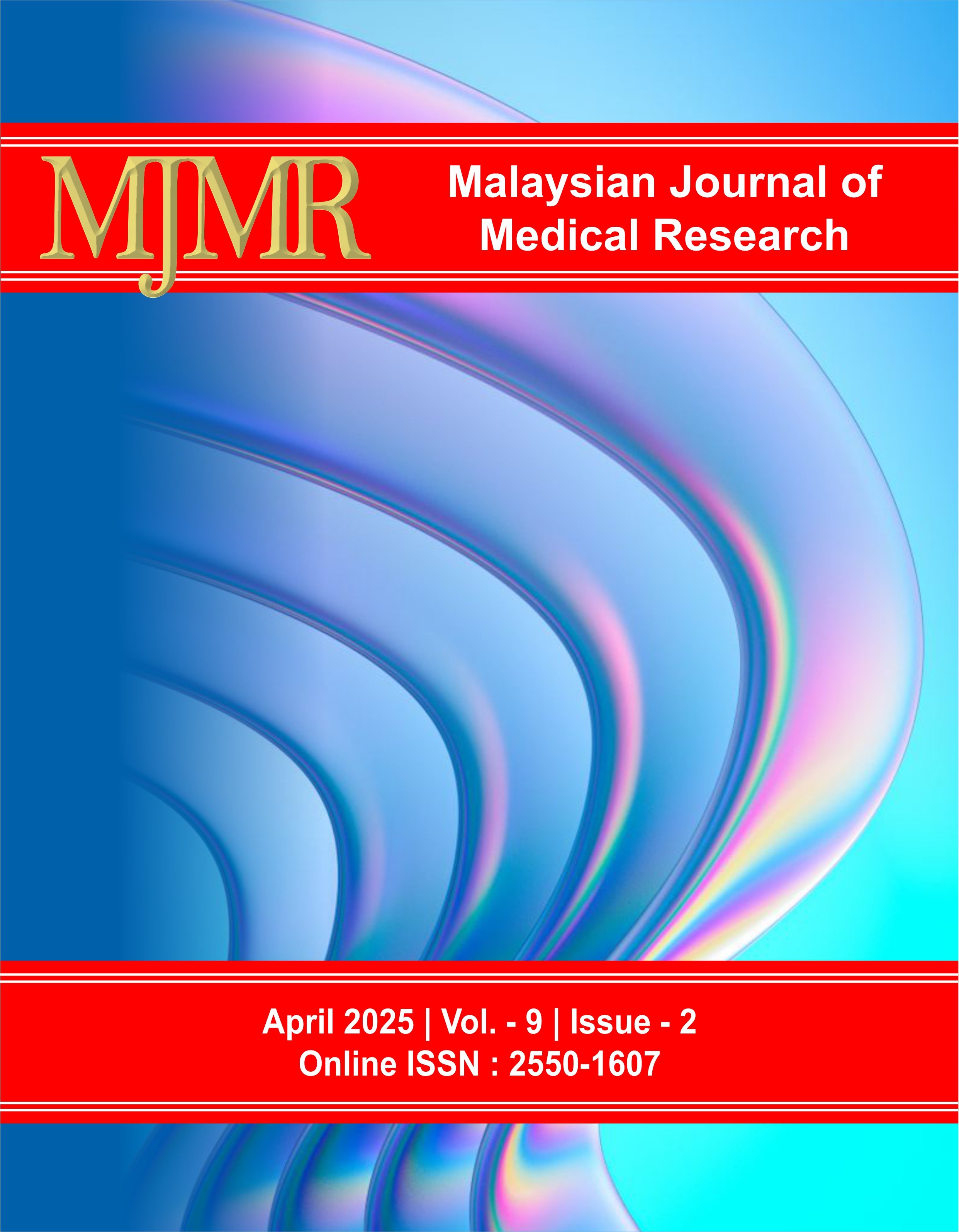Accuracy Assessment of an Android-Based Pharmacokinetic Application for Amikacin Using Mean Absolute Percentage Error (MAPE)
DOI:
https://doi.org/10.31674/mjmr.2025.v09i02.001Abstract
Background: This study evaluates the accuracy of an Android-based pharmacokinetic application, the "Indonesia Pharmacokinetic Calculator" (Kalkulator Farmakokinetik Indonesia - KFI), developed to calculate individual pharmacokinetic parameters in patients receiving amikacin, a narrow therapeutic index drug. Objective: To assess the accuracy of the KFI application in calculating pharmacokinetic and pharmacokinetic/pharmacodynamic parameters and to compare its performance with MS Excel. Methods: The KFI application incorporates pharmacokinetic algorithms to calculate patient-specific parameters (e.g., k, t½, Vd, CL, AUC, Cpss, and time to reach Cpss) and pharmacokinetic/pharmacodynamic parameters (e.g., Cpmax/MIC Ratio, AUC0-24h/MIC Ratio). The application allows the input of patient data, including two post-dose drug concentration measurements. Accuracy was assessed by comparing the KFI outputs with those obtained from MS Excel using identical formulas. The Mean Absolute Percentage Error (MAPE) was used to quantify differences between the two methods. Results: The KFI application demonstrated high accuracy in calculating pharmacokinetic parameters, with an average MAPE of 0.04% and a standard deviation of 0.13%. Most parameters exhibited an APE of 0.00%, indicating near-perfect agreement with MS Excel calculations. Minor differences were observed for clearance (CL) and minimum steady-state concentration (Cpss min), with APE values of 0.05% and 0.50%, respectively. These differences were considered clinically acceptable. Conclusion: The Android-based pharmacokinetic application has been shown to provide a reliable and accurate tool for calculating pharmacokinetic and pharmacokinetic/pharmacodynamic parameters for amikacin, offering significant potential for clinical decision-making and optimising therapy.
Keywords:
Amikacin , Android Application, MAPE, Pharmacokinetics, Therapeutic Drug MonitoringDownloads
References
Davit, B., Conner, D., & Shargel, L. (2016). Drug product performance, in vivo: Bioavailability and bioequivalence. Applied Biopharmaceutics & Pharmacokinetics, (7th ed).; Shargel, L., Yu, A., Eds, 469-528. Retrieved from: https://accesspharmacy.mhmedical.com/content.aspx?bookid=1592§ionid=100673388. Accessed on 12th January 2024.
Komalasari, R. (2020). Manfaat teknologi informasi dan komunikasi di masa pandemi covid 19 (Benefits of information and communication technology during the Covid-19 pandemic). Tematik, 7(1), 38-50. https://doi.org/10.38204/tematik.v7i1.369
Logre, E., Enser, M., Tanaka, S., Dubert, M., Claudinon, A., Grall, N., Mentec, H., Montravers, P., & Pajot, O. (2020). Amikacin Pharmacokinetic/Pharmacodynamic in Intensive Care Unit: A Prospective Database. Annals of Intensive Care, 10(1), 75. https://doi.org/10.1186/s13613-020-00685-5
Mahmoudi, L., Mohammadpour, A. H., Ahmadi, A., Niknam, R., & Mojtahedzadeh, M. (2013). Influence of Sepsis on Higher Daily Dose of Amikacin Pharmacokinetics in Critically Ill Patients. European Review for Medical and Pharmacological Sciences, 17(3), 285–291. Retrieved from: https://europeanreview.org/wp/wp-content/uploads/285-291.pdf. Accessed on 19th February 2024.
Makridakis, S. (1993). Accuracy measures: Theoretical and practical concerns. International Journal of Forecasting, 9(4), 527–529. https://doi.org/10.1016/0169-2070(93)90079-3
Munar, M. Y., Singh, H., Belle, D., Brackett, C. C., & Earle, S. B. (2006). The Use of Wireless Laptop Computers for Computer-Assisted Learning in Pharmacokinetics. American Journal of Pharmaceutical Education, 70(1), 04. https://doi.org/10.5688/aj700104
Sentat, T., Lucida, H., Widyati, W., & Nasif, H. (2024a). Enhancing Therapeutic Drug Monitoring in Indonesia: An Android-Based Pharmacokinetic Calculator for Amikacin. Journal of Research in Pharmaceutical Science, 10(8), 35–51. https://doi.org/10.35629/2995-10083551
Sentat, T., Lucida, H., Widyati, W., Nasif, H., Harahap, Y., Harijono, P., & Ratih, R. (2024b). Development and validation of a bioanalytical method for therapeutic drug monitoring of amikacin in human plasma using ultra-performance liquid chromatography-tandem mass spectrometry. International Journal of Applied Pharmaceutics, 16(Special Issue 1), 140-144. https://dx.doi.org/10.22159/ijap.2024.v16s1.30
Taccone, F., Laterre, P.-F., Spapen, H., Dugernier, T., Delattre, I., Layeux, B., De Backer, D., Wittebole, X., Wallemacq, P., Vincent, J.-L., & Jacobs, F. (2010). Revisiting the Loading Dose of Amikacin for Patients with Severe Sepsis and Septic Shock. Critical Care, 14(2), 1-10. https://doi.org/10.1186/cc8945
Published
How to Cite
Issue
Section
License
Copyright (c) 2025 Malaysian Journal of Medical Research (MJMR)

This work is licensed under a Creative Commons Attribution-NonCommercial-NoDerivatives 4.0 International License.























